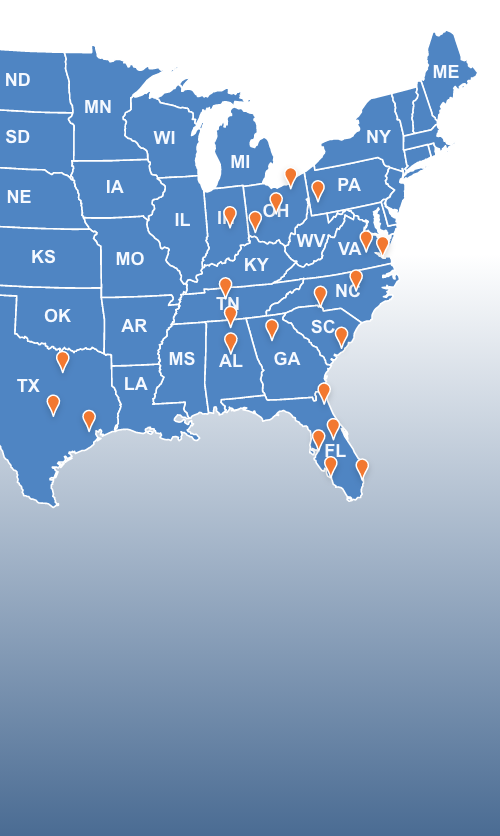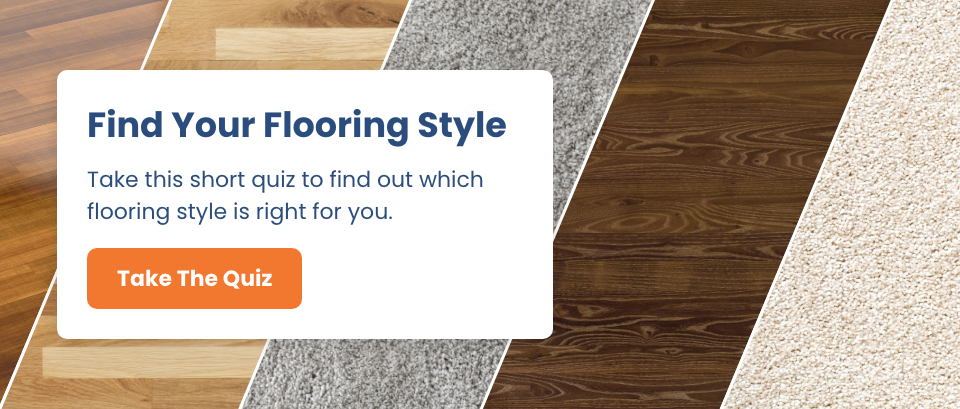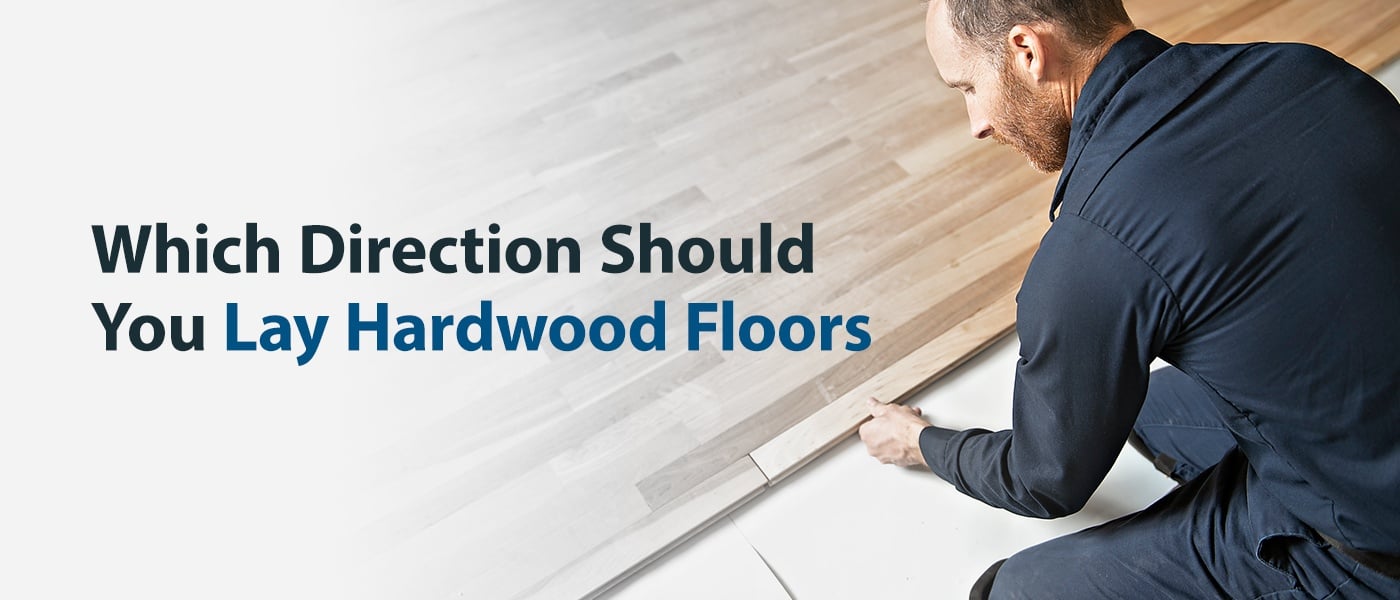

Before installing your gorgeous new hardwood floor, it’s important to decide which way to lay hardwood flooring to ensure a smooth installation process and that your home will look its best. When determining which direction to lay flooring, you’ll need to consider many variables, such as the dimensions of the room, the structural foundation, and lighting. Once you’ve thought through all the details, you’ll be ready to pick the perfect hardwood flooring pattern for your space.
To help you decide how to lay wood flooring in your home, we put together this guide to different hardwood flooring designs and unique considerations for each room.
What to Consider When Deciding How to Lay Hardwood Floors
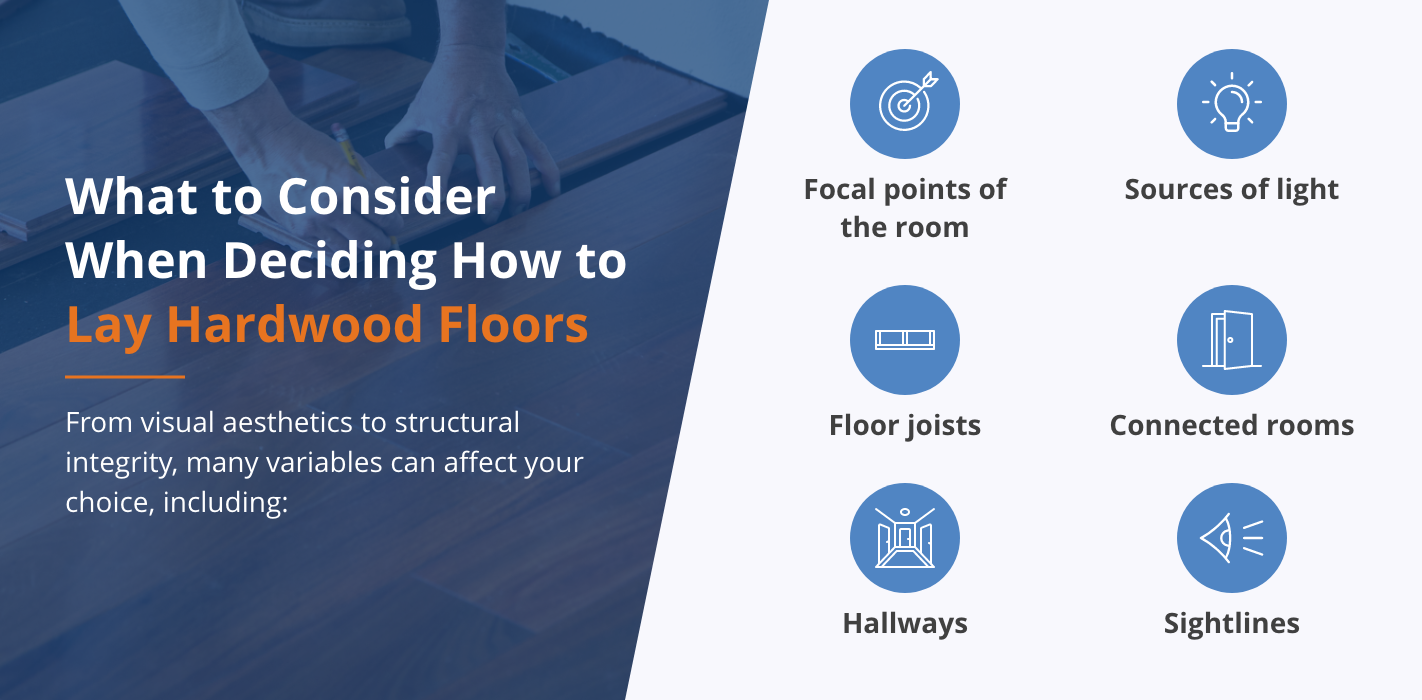

There are several factors to consider, from aesthetics to structural integrity, including:
- Focal points of the room: The location of the room’s main focal point—the part of a room your eye naturally wants to go to—will often determine what direction to lay wood flooring. Whether that is a fireplace, a picture window, or another stunning architectural detail, lay planks to guide the eye toward leading it.
- Sources of light: Before laying hardwood flooring, consider how light will fall between the boards. Your choice can subtly shorten or lengthen the appearance of the room. Boards that run outward from the room’s entrance will make the space appear larger, while laying the boards from sidewall to sidewall will make the room seem smaller and cozier.
- Floor joists: Don’t neglect structural considerations when choosing which way to lay wood flooring to get the longest life from your investment. A floor joist is a structural feature that supports the floor over an open area, such as a basement or crawl space. Many joists are installed side-by-side with a subfloor nailed over top. Install your hardwood perpendicular to the floor joists, as opposed to in between them, to help prevent the planks from separating, sagging, or buckling.
- Connected rooms: If you plan on laying a wood floor in multiple rooms, make sure you plan out the flow of your planks. For an open-concept space, hardwood can be installed lengthwise from one end to the other, whereas oddly shaped spaces won’t allow for one continuous line of sight. To avoid awkward hardwood transitions, you can lay the planks in a diagonal pattern or place a transition strip at the threshold of each room where the flooring changes direction.
- Hallways: Many homeowners wonder how to lay wood flooring in long, narrow spaces like hallways. To prevent a choppy look with hardwood flooring in hallways or narrow rooms, lay the planks outward from the doorway.
- Sightlines: Positioning hardwood to run from the main entrance of a room toward the opposite wall can simplify the sightline and help the space look less busy.
Ultimately, there is no one “right” way to lay hardwood floors. The best approach for laying hardwood can vary depending on the shape, size, and layout of the area you’re covering.
Different Ways to Run Hardwood Flooring
Before starting your hardwood floor installation, consider the main design options:
1. Vertical Hardwood Floor Direction
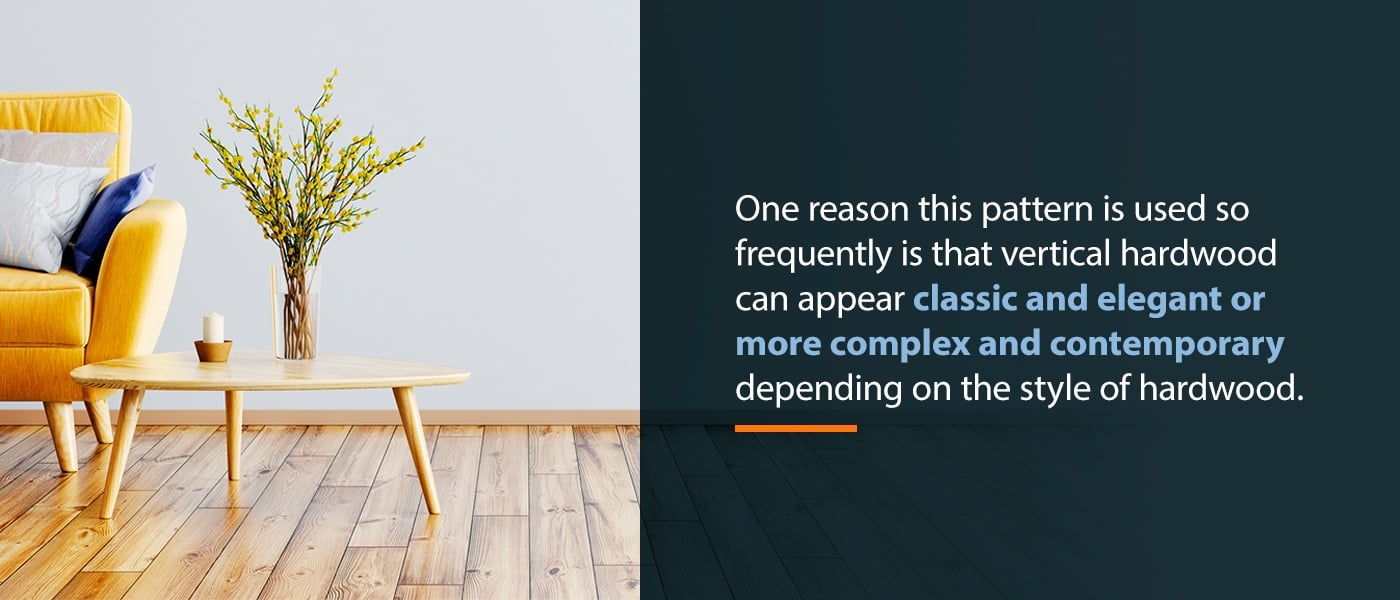

The most common direction to lay hardwood flooring is vertical. When laying hardwood in a vertical or straight pattern, the planks are installed parallel to one another along the length or width of the room. One reason this pattern is used so frequently is that vertical hardwood is adaptable—it can appear classic and elegant or more complex and contemporary, depending on the style of hardwood and your decor.
Another reason vertical has become a go-to hardwood pattern is that it is relatively simple and inexpensive to install. While other hardwood patterns may require extra planks of hardwood and more time to complete, a vertical design won’t come with any surprise costs.
2. Horizontal Hardwood Floor Direction
Another widely popular choice for how to lay wood flooring, horizontal designs run from sidewall to sidewall. Perfect for narrow spaces, horizontal hardwood flooring combats a cramped feeling by drawing the eye from side to side rather than down the length of the room.
3. Diagonal Hardwood Floor Direction
If you want to give your home a classy finish, consider laying your hardwood flooring in a diagonal pattern. A diagonal hardwood floor design gives your space a bit of style and intrigue without deviating too far from the traditional vertical hardwood direction. To accomplish a polished diagonal design, the hardwood planks are placed parallel to each other at about a 45-degree angle to the walls.
4. Herringbone Hardwood Floor Direction
A slightly more elaborate take on the diagonal design, the herringbone wood floor pattern lays planks diagonally in a zigzag pattern. Instead of flowing in one direction, herringbone alternates the direction of each plank to create a unique interlocking pattern similar to a chevron. To give a room a modern feel, try laying hardwood in a herringbone pattern.
5. Parquet Hardwood Floor Direction
A parquet hardwood pattern involves laying the planks in a repeated geometric pattern. Most often, the parquet pattern gives the hardwood floor the appearance of a sophisticated checkerboard. For an advanced parquet pattern, you can include a more complex pattern within each checkerboard square. Parquet is one of the classic ways to lay hardwood floors that has seen a resurgence in popularity in recent years.
6. Random Hardwood Floor Direction
Laying hardwood flooring in a random pattern sticks with parallel floorboards but uses a mixture of different plank widths to create a more homespun feel. This random pattern allows you to pick the ratio of narrow and wide planks to create a customized look. Consider choosing a random hardwood design to give your home a more rustic aesthetic and energized feel.


How to Determine Which Way to Run Wood Flooring
When deciding how to lay hardwood flooring, think about the size and purpose of the room. The direction of wood flooring planks can make a smaller room look bigger or transform a simple space into something unique. And don’t forget the overall design of your home: You may not want to use modern floor designs if the rest of your home is of a more traditional style.


Wood Floor Direction in Bedroom
Who doesn’t love a spacious bedroom? If you’re wondering how to install hardwood floors to make your bedroom appear bigger, a horizontal pattern is for you. It draws the eyes from side to side rather than emphasizing the nearness of the back wall. This design will also likely run parallel to your bed frame and nightstands, depending on how you organize your room. This can create a nice flow and symmetry in the room.
Which way wood floors should run in your bedroom can also depend on your envisioned design for the space. If you want something unique and personal, you could go for a random design. If you want something different but still want distinct patterns, opt for a parquet and herringbone design.
Wood Floor Direction in Kitchen
If you’re interested in trying a fun patterned way to run your wood flooring, such as herringbone or parquet, consider using it in your kitchen. Your kitchen is typically set off from the rest of your home — even if you have an open floor plan, kitchens still tend to have their own distinct markers of where they start and end.
This separation from the rest of your home’s design choices makes the kitchen the perfect place to incorporate a fun flooring design without committing to a full multi-room hardwood floor installation.
Wood Floor Direction in Hallway
When choosing flooring for your hallway, you’ll want to work with your hallway design, not against it. Opt for a vertical run to create a nice flow down the passageway. Laying hardwood in a complex pattern can make a hallway or other narrow space feel crowded and muddy your design.
Wood Floor Direction in Living Room
Diagonal flooring is great for gathering areas like living rooms. This layout creates the illusion of a bigger space while adding a twist to the traditional vertical design. Making your living room appear bigger will help the space feel more comfortable when you host gatherings or family movie nights.
If your living room is smaller, you could also consider how to lay wood flooring to lean into the cozy feeling. A random floor pattern can help accent a room’s character, making the space more inviting.
Wood Floor Direction in Bathroom
The best way to run flooring in your bathroom can depend on the size and shape of the space. In narrow or small bathrooms, diagonal or horizontal runs may open up the space and make it feel larger and airier.
If your bathroom is a decent size, you may want to experiment with fun ways to lay hardwood floors. Similar to your kitchen, bathrooms always feel distinct from the rest of your home. So, even if your design style is slightly different within your bathroom, it will still flow with the rest of your home.
Enjoy classy and traditional running wood in your hallways and living spaces, and add some spunk with zigzag patterns in your bathroom.
Schedule an Appointment With 50Floor to Install New Hardwood Floors
If you’re ready to install hardwood flooring, book an in-home appointment with 50Floor to find out which hardwood pattern would look best for your floors. Our flooring experts will show you a variety of hardwood flooring options and help you choose the one that best fits your needs. Contact 50Floor about your free in-home consultation today.


